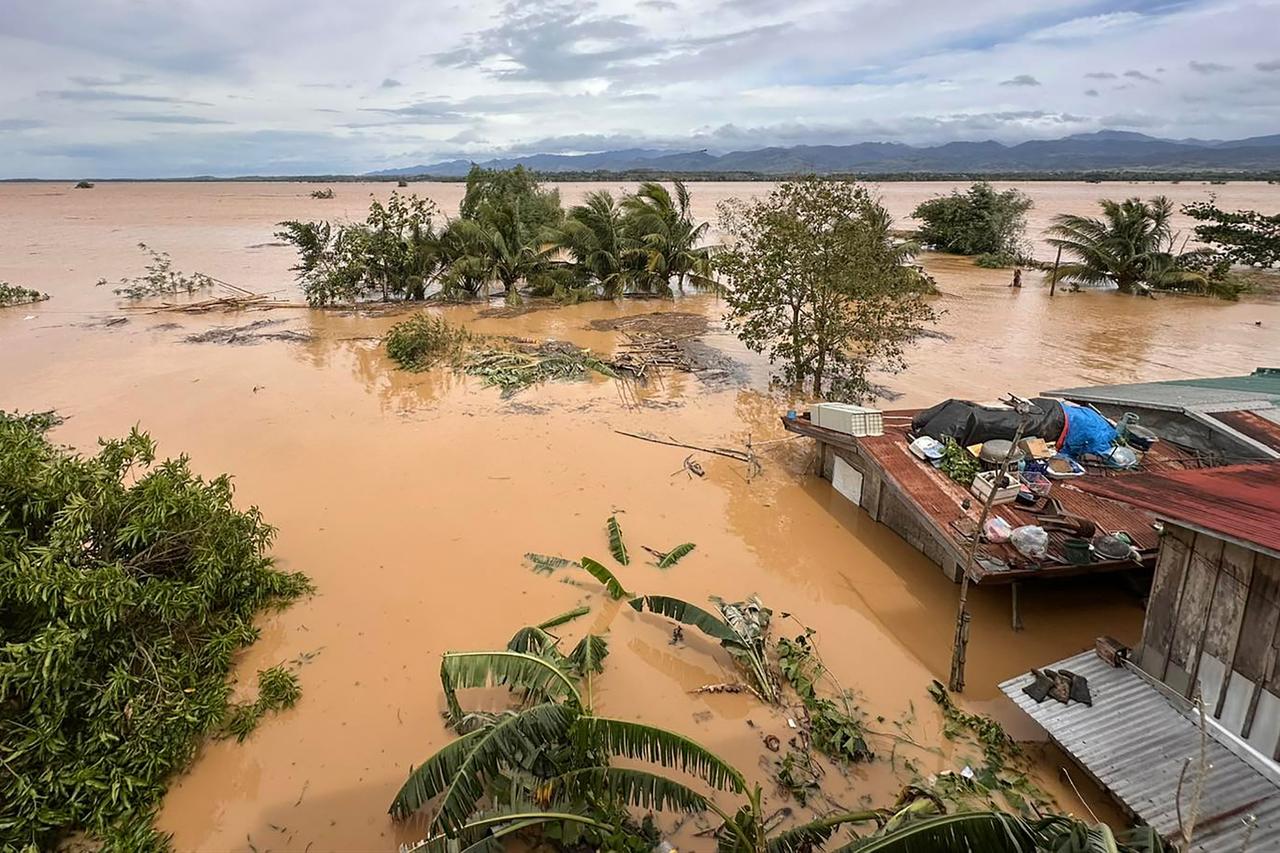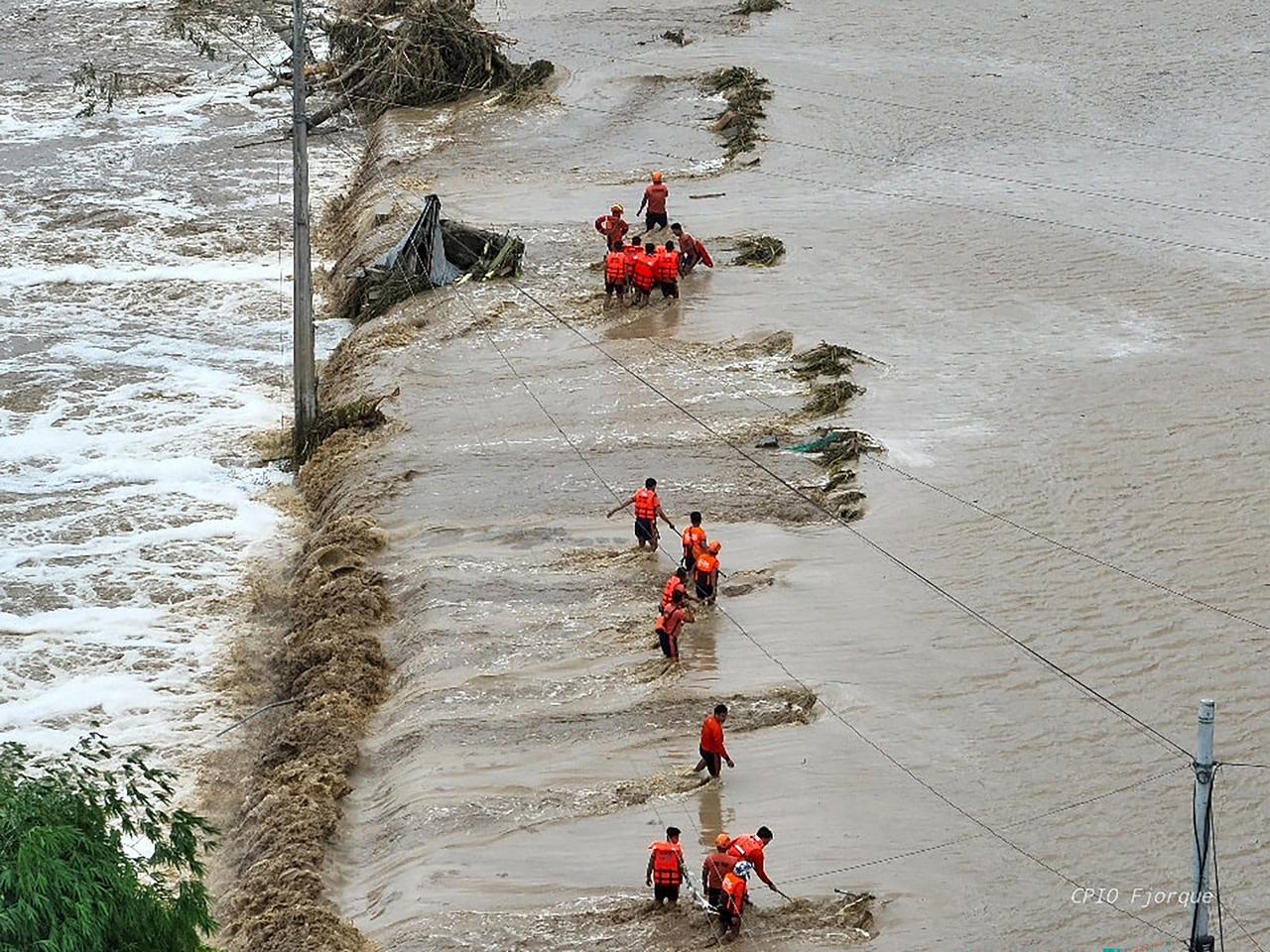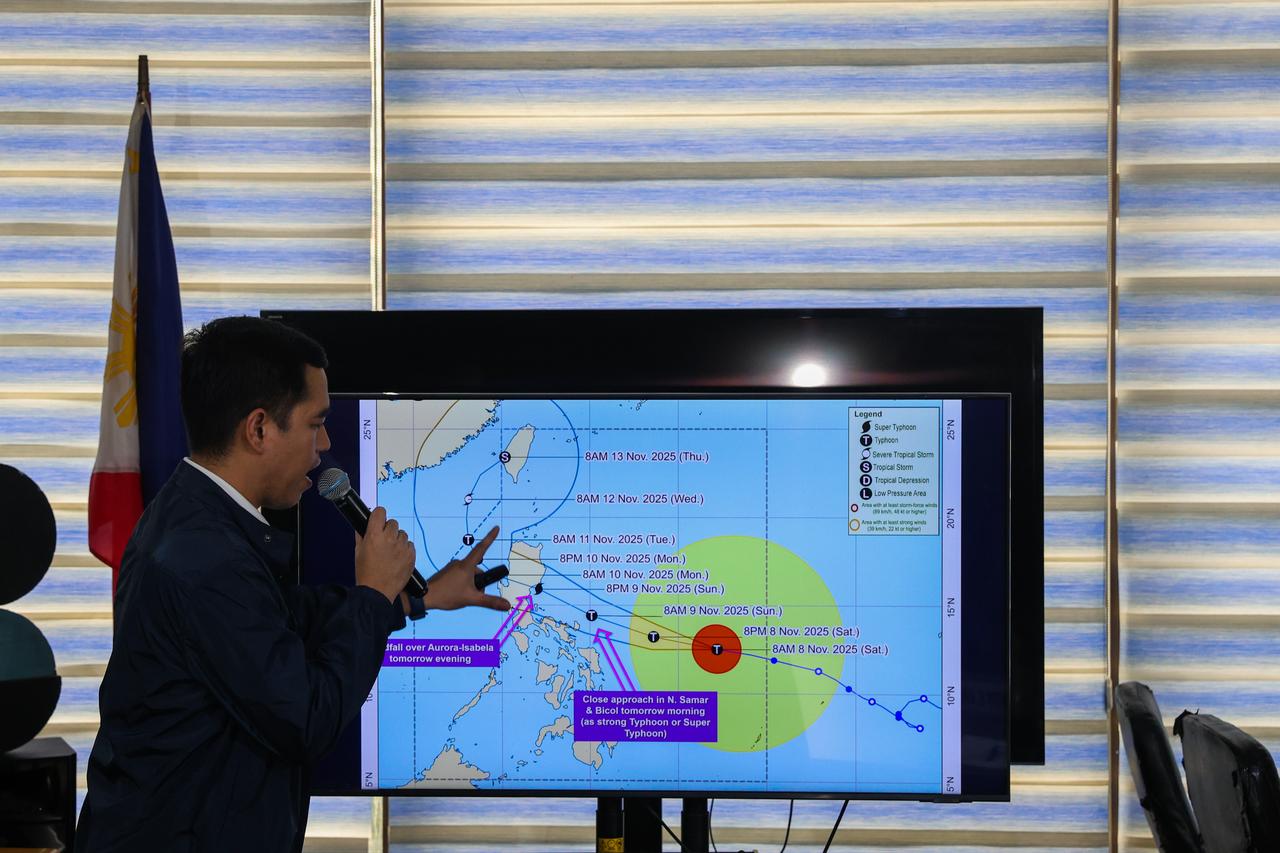
Typhoon Fung-wong swept across the Philippines over the weekend, leaving widespread destruction, at least two confirmed deaths, and more than 1.4 million people displaced.
The super typhoon, which made landfall on the eastern coast of Luzon on Sunday evening, caused severe flooding, landslides, and power outages across multiple provinces.
Entire villages were submerged, and scores of towns were left without electricity as rescue teams scrambled to evacuate residents.
In Cagayan province, a flash flood in neighboring Apayao caused the Chico River to overflow, forcing thousands to climb onto rooftops to escape rising waters. Tuguegarao City, located approximately 30 kilometers (18.6 miles) from the overflowing river, was reported submerged.
The storm struck just days after Typhoon Kalmaegi swept across the central Philippine islands, resulting in at least 224 fatalities.
Provincial authorities confirmed that over 5,000 people were evacuated in Cagayan before floodwaters engulfed the city. Schools and government offices across Luzon, including the capital Manila, were closed as residents assessed damage and began cleanup efforts following intense rainfall.

The first confirmed fatality occurred in Samar province, where a 64-year-old woman was killed while attempting to evacuate her home. The second death was reported on Catanduanes, where a person drowned in flash floods.
The storm comes days after Typhoon Kalmaegi devastated the central Philippines, killing at least 224 people and leaving widespread damage in its wake. President Ferdinand Marcos has declared a year-long “state of national calamity” in response to the cumulative impact of both storms.

Meteorologists warn that Fung-wong is now moving toward Taiwan, where it is expected to intensify and bring torrential rains, particularly to northern and eastern regions. Authorities in Hualien County have begun evacuating nearly 5,000 residents as a precaution, recalling the deadly impact of Super Typhoon Ragasa earlier this year.
Experts say that the increasing intensity and frequency of typhoons in the Philippines are linked to climate change. Warmer ocean temperatures allow storms to strengthen rapidly, while a warmer atmosphere holds more moisture, resulting in heavier rainfall.

Emergency services continue to work across affected regions, prioritizing evacuation, relief distribution, and damage assessment. With the Philippines regularly facing around 20 typhoons annually, the combination of Fung-wong and Kalmaegi highlights the growing challenges for disaster preparedness and climate resilience in the archipelago.